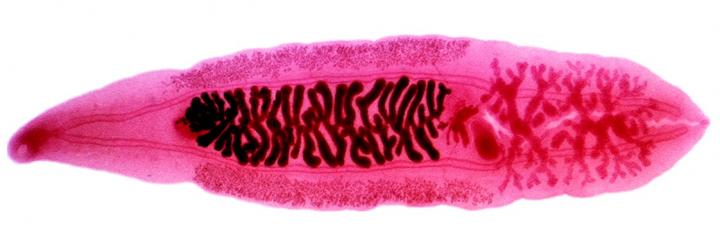Clonorchiasis, a neglected tropical disease usually acquired by eating undercooked freshwater fish, affects an estimated 15 million people around the globe. More than 85% of cases are concentrated in China. Now, researchers have produced high-resolution risk maps for clonorchiasis in China. Their results, published in PLOS Neglected Tropical Diseases, identified provinces with the highest risk and important predictors for clonorchiasis. Moreover, the risk of the disease has been profiled for areas without survey data.
The causative agent of clonorchiasis is the liver fluke Clonorchis sinensis. Manifestation of clonorchiasis ranges from asymptomatic to causing liver disorders and can increase the risk of cholangiocarcinoma. Efforts have been launched to combat the disease in China, through treatment, education, and environmental modifications. However, no high-resolution country-wide maps have been previously available to help officials and disease control managers to target interventions in areas with the highest risk.
In the new work, Penelope Vounatsou, of the Swiss Tropical and Public Health Institute, and colleagues systematically reviewed existing literature on clonorchiasis in China to find all survey data on the disease collected between 2000 and 2016. They then collected socioeconomic and environmental information on each location referenced in the surveys and used Bayesian geostatistical analysis to determine the association between infection risk and disease predictors and to predict the risk of infection across all areas of China at high spatial resolution.
The researchers obtained clonorchiasis survey data from 633 unique locations across China. They found that the prevalence of infection had risen from 2005 onwards and estimated that 14.8 million people in China were infected in 2010. They showed that elevation, distance to the nearest body of freshwater, and land cover type were all associated with infection risk and mapped the risk throughout China. Three provinces–Guangdong, Guangxi, and Heilongjiang–were found to have the highest risks of clonorchiasis.
“Large-scale control activities are currently lacking in most endemic provinces, as control plans are difficult to make when the epidemiology is only known at provincial levels,” the researchers conclude. “Our high-resolution infection risk estimates provide important information for targeted control.”


